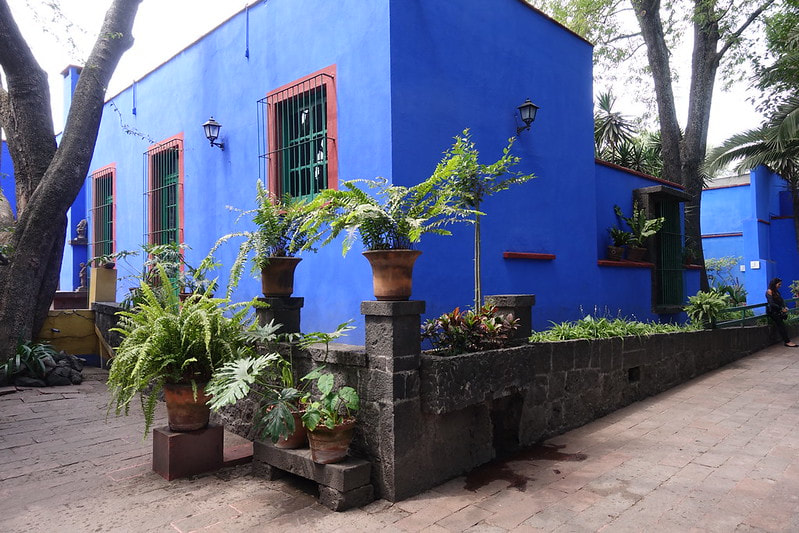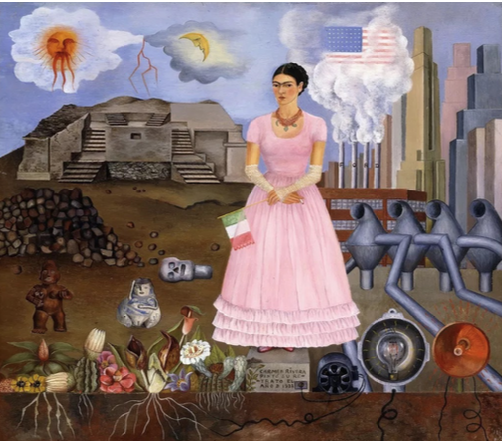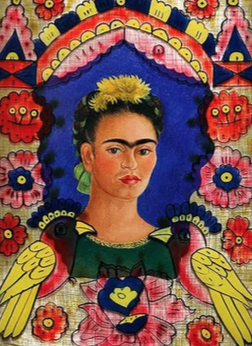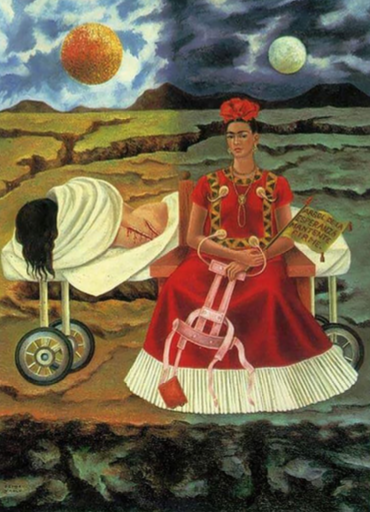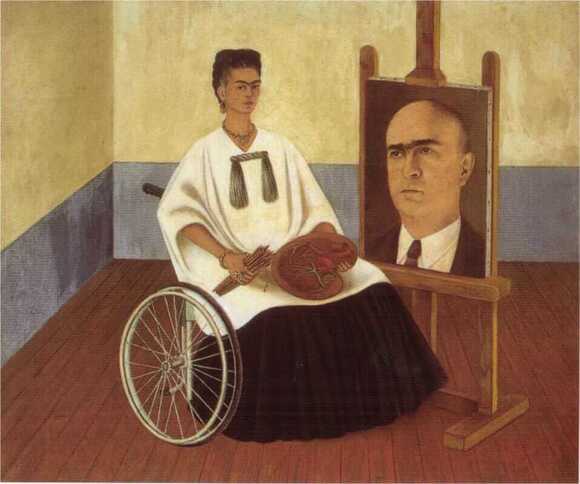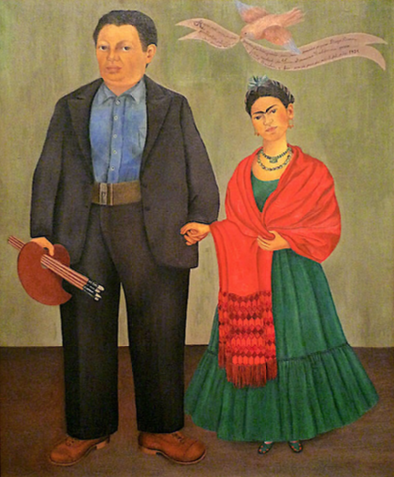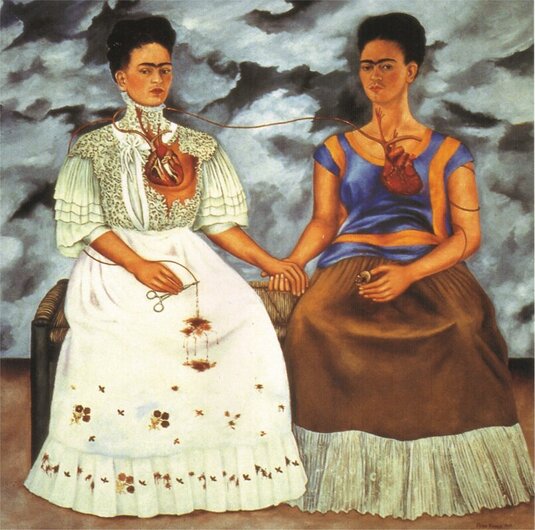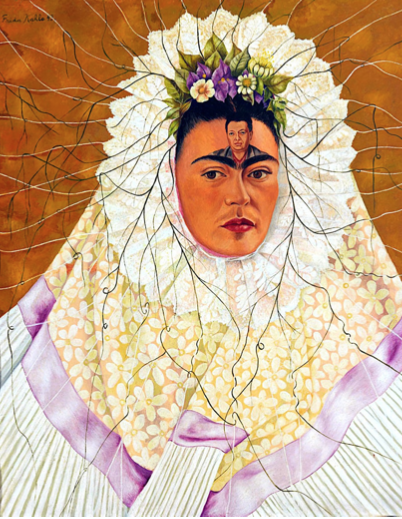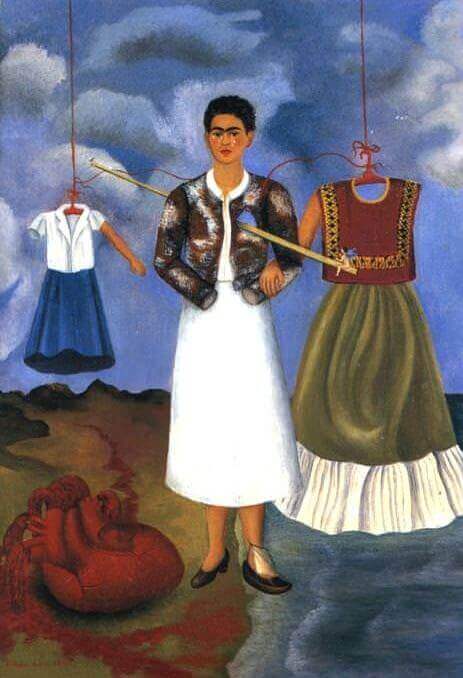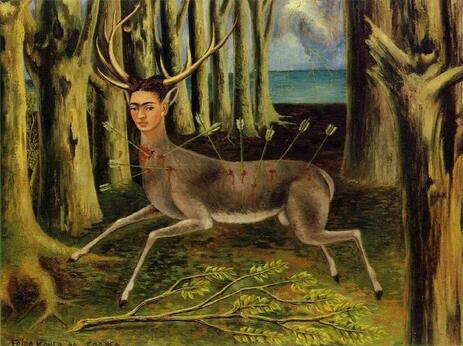|
La Casa Azul- The Blue House Early into the trip to Mexico City I had taken with my mother and sister after the death of my brother, we left our mother to read in her sultry, unairconditioned room. My sister had booked a hotel without handicap access, and so we left her there, my mother’s steely blue eyes locked with mine as she said she’d be fine. My sister and I found our way through the maze of narrow corridors and the richly ornate red tiled lobby of The Best Western Majestic Hotel in Plaza de la Constitución and stepped outside to encounter a group of local priests, the same ones who had told my mother yesterday they felt slighted by the Vatican and continued to hold signs of quiet protest while they sat, hunched on the curb. The gray smog filled sky hung like a weight pushing us closer to the street gutter openings, which contained a pungent excreta odor wafting upwards to meet the air . . . with us pressed somewhere in between. We turned the corner and headed to La Casa Azul. I knew nothing of Frida Kahlo except that she was a famous Mexican artist. I wanted to tell my sister that I wished I had stayed holed up in the hot hotel room reading a mindless book, . . . but we were here. The bold and not quite blue hyacinth colour seemed dismissive and gaudy next to the natural surroundings, and the sky, a faded egg-shell blue at the top, divided one side and drew my attention. Neither of us spoke. Etched in what looked like stone: 1929-1954, above a Alice in Wonderland-type door, dark forest green, alluring and foreboding. Another door came immediately to mind: a door where, back when my brother existed, he had once said, “Hey, I guarantee I have the ugliest sister – look!” The house door locked as I stood in an empty garage, and then he dashed away. Back to the Blue House- Museo Frida Kahlo – its blue too loud. I glanced at my sister – no, her psyche would not suck me in. Enclosed courtyard – greener than flower stems, but blue dominated – both bold and reticent – confidant and desolate. The sun – icy hot ...absorbed the chartreuse pink flowers that rose from the blood-red floor. At first, we explored the house together – wandering through each room – then my sister was gone – evanescent. I wished I taught English Literature – not Hester Prynne and the Puritans who stood too tall with all their judgment. I stared at the metal wheelchair – the prison- and then the sun. So hot – brutal. In her studio, aged paints and weather worn pottery sat still and neat, clashed with the Mexican Revolution, which reflected her battled body after the accident. After my brother’s accident, I learned he had been wearing two watches. “Why was he wearing two watches?” I asked my sister on the phone. “Throw them away,” my sister said. The phone clicked. The series of self-portraits . . . the unibrow over hollow eyes enclose the courtyard . . . bright coloured leaf greens, red orange scarves, and a dull turquoise blouse. What message does the dove bring to her lover Diego Rivera, and why does it hover over her head and not his? She almost holds his hand, but he has the paint brushes. She tilts her head toward him. Alongside the painting are words I asked my sister to interpret, and she gave me a general interpretation since her Spanish was weak: “Autobiographical testimony of Frida and Diego of her love of México of her personal universe of her indigenous culture, live pre-Columbian and popular art daily realization of her suffering and her happiness encompass her work artists Mexicano and universal” Next picture: old, dried blood. I wanted to turn my head – partial babies float over a blank stare – broken pieces tether, but drift. I read Frida’s quote: “I drink to drown my sorrows, but the damned things have learned to swim.” “Get him!” My mother’s yell had echoed over the ice arena. I laughed and watched my brother try to follow me, but the ice leveling machine seemed to close in on him. “Shame on you!” My father’s voice joined in as my mother panicked to see such a little guy in the open space. My brother called out my name. I joined him and the rest . . . a silent car ride home. My parents sat in the front seat like a jury. The Two Fridas. Which one? Again, tethered together, one with scissors slipping on an ivory dress – dark dried blood stains – and one holding her lover’s picture – both hearts on the outside reaching upward to the hollow eyes – two Fridas holding hands. “Can you speak a little louder? I’m having trouble hearing you,” I said. Diego in My Thoughts. In this self-portrait, Diego Rivera materializes in her forehead. Daisies like flowers with purple petals surround him. This time her eyes shift away, and crack like strings fill the open veil. Where is she looking? What does she see? He is in her head but perched, not blended. I stood outside my brother’s bedroom, riveted once again. For three hours, he lay in the same position – lining up his toy soldiers. Somehow, he answered the phone, the last time we talked. “Did you know I finally read The Great Gatsby? My history students kept telling me to read it, and I finally did. I liked it.” I saw him line up the Union and Confederate soldiers again, that scene in his bedroom from long ago. He rearranged and reordered them over and over again... I wondered how much he knew about Mexican history within the context of his American history specialty; if he did, he would have learned their voices somehow – looked at primary documents to study, and then have them tell their story. In Memory hang two dresses. I can’t see my sister or me wearing either one of them, but we couldn’t anyway because they are tied to her, to Frida. These orderly looking dresses each have one arm extended out of opposite sleeves. The hanging rod for the dresses goes right through where her heart should be; it’s missing. Her white tears contrast the dark skin, and the glob in the corner is covered with brown blood and claw like accessories. Her pure white dress is without blemishes, and her eye lids droop. In a photograph in my mother’s home, she’s holding my brother while I’m looking away as we stand on the ocean shore. The police report said he hit a tree. More trees in The Wounded Deer. A large body of ocean like water appears in the distance. Spidery lines slash over the cloudy white clouds that meet the water. The deer’s body is disproportionately on the path, and even though arrows pierce the skin and draw blood, a rather definite looking Frida-face replaces the head. The pointed antlers curve upward and spring from her hair. She’s still there, after the loss once again of a fetus that can’t survive. The end of the tour brought me back to this painting. The tree trunks frame a window. If the deer would only turn, what would she see? Three layers of colours, perfectly balanced, except for the weeping willow like clouds line up from dark brown, to blue, to part of the whitish clouds. The water stands still, though. After school, my brother stood waiting at the bay window in the living room for my sister. I told him it would be at least an hour, but he waited for her anyway...for my sister to get off the bus at the top of the hill and walk down. He didn’t move . . . just existed there- still. "Here, look in here!” Long ago, my brother crouched beside me in the basement of our home as we peered into a little black hole in the back of an old judge’s bench my father had brought home. “The elves live here, see?” We both stared for a long time... I knew he saw them. We should have held hands and gone in together. Donna Canan Donna Canan lives in St. Louis, Missouri and teaches English at Kirkwood High School. She holds an EdD in Instructional Leadership and won the NCTE Paul and Kate Farmer Award for her article in the English Journal entitled "I Hear America Sing: Promoting Democracy through Literature."
1 Comment
Ruth Baldwin
1/15/2023 09:12:00 am
The best art helps us to illuminate and make sense of our own lives. The paintings of the Blue House help to frame Canan’s own life stories, evoking the same feelings.
Reply
Your comment will be posted after it is approved.
Leave a Reply. |
The Ekphrastic Review
COOKIES/PRIVACY
This site uses cookies to deliver your best navigation experience this time and next. Continuing here means you consent to cookies. Thank you. Join us on Facebook:
July 2024
|
